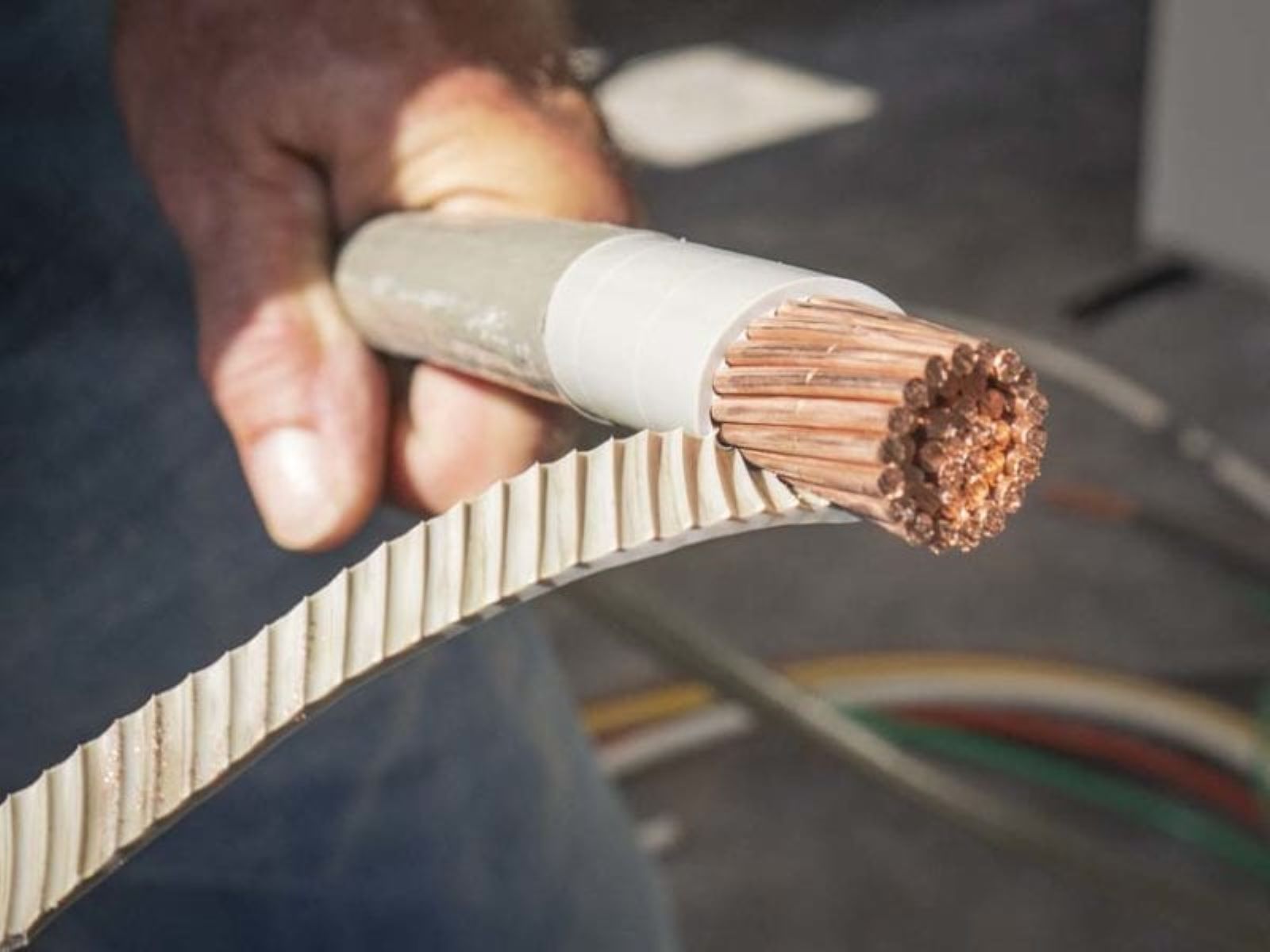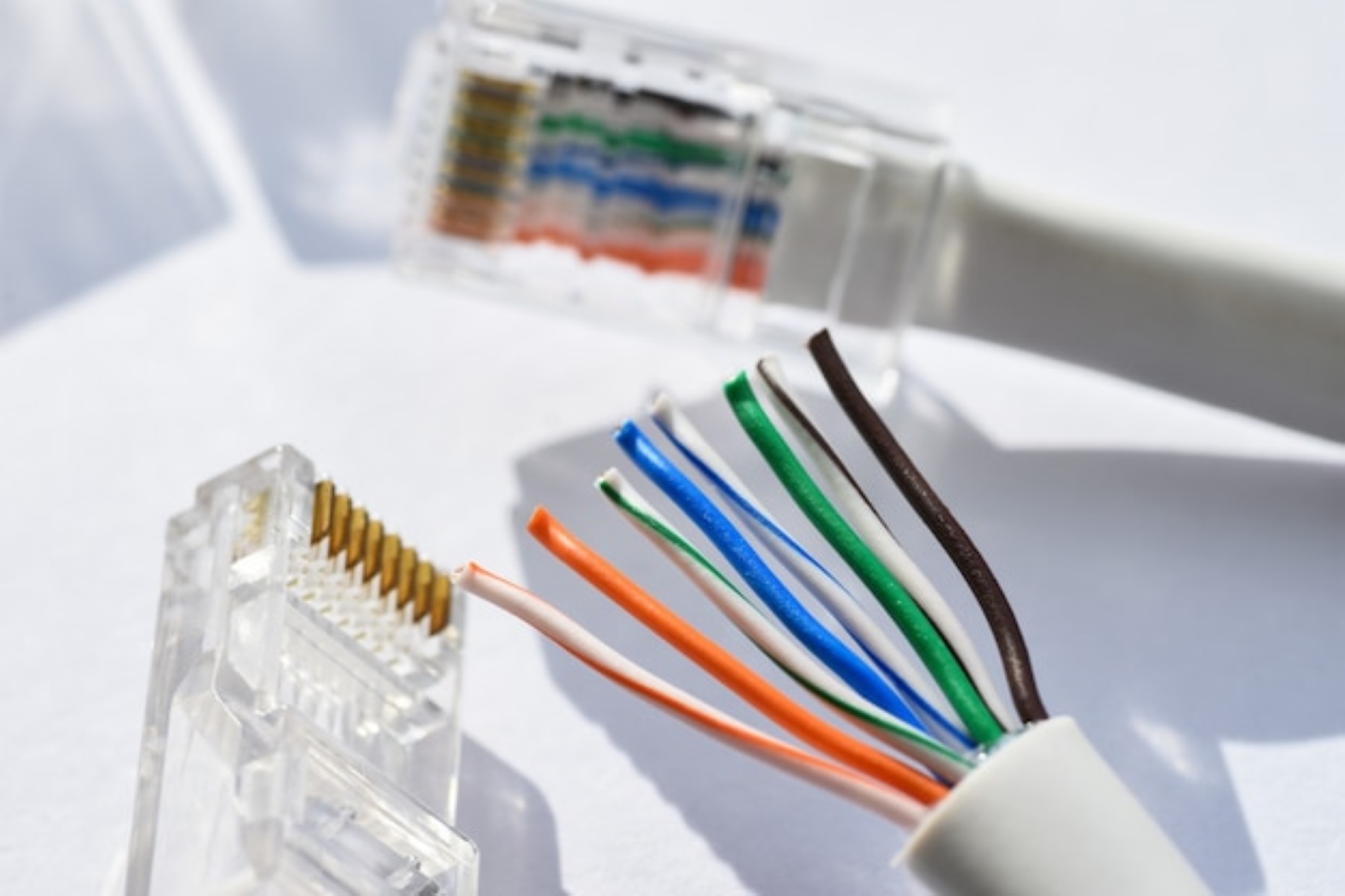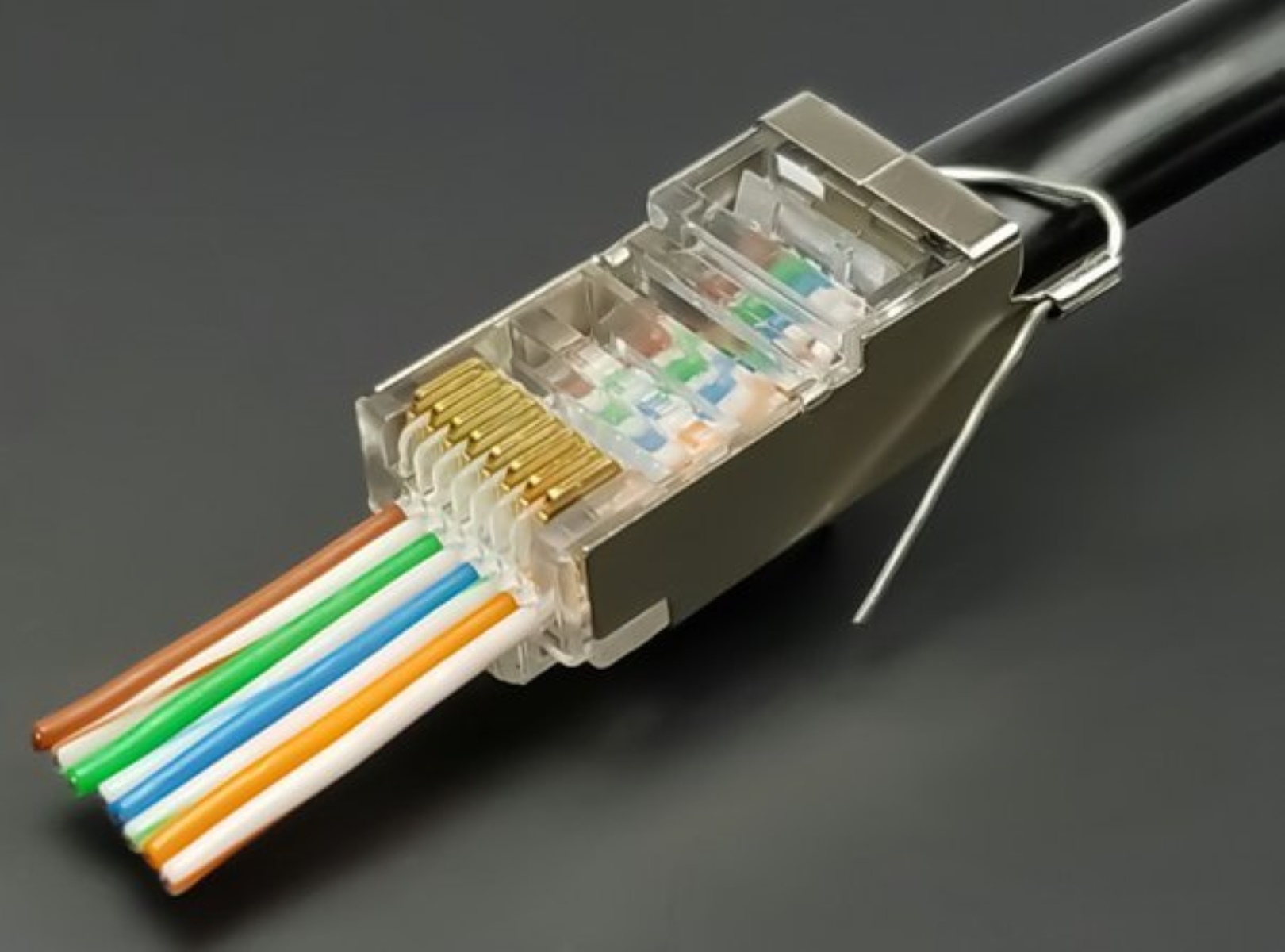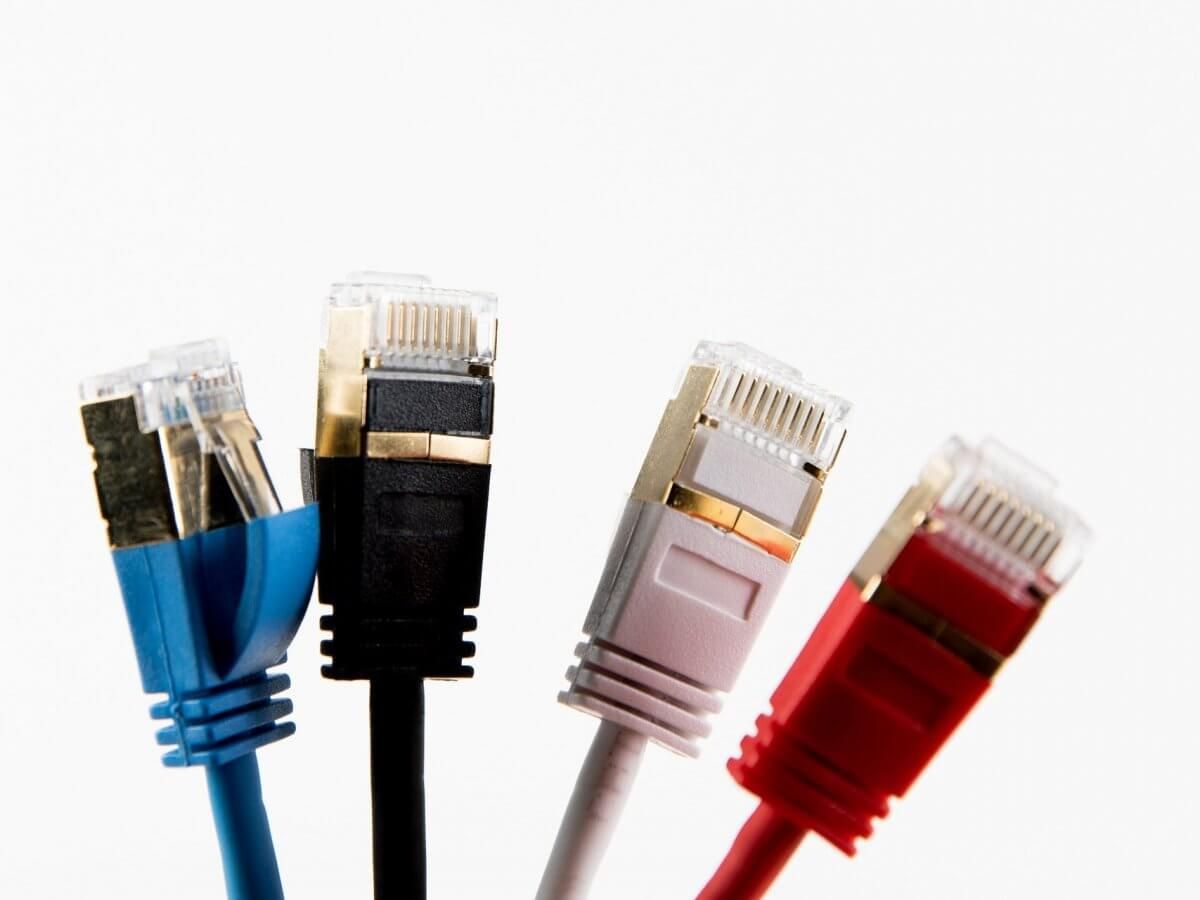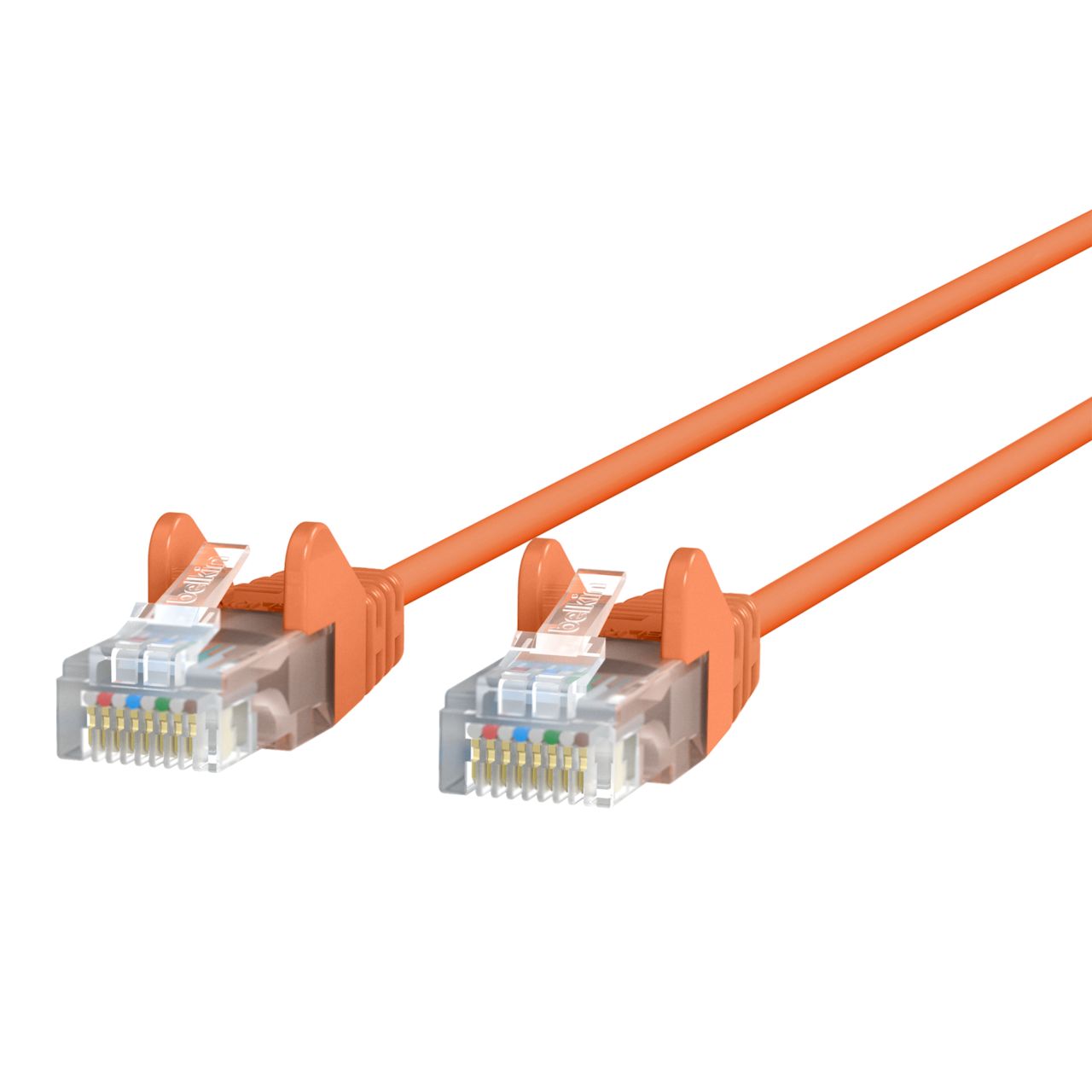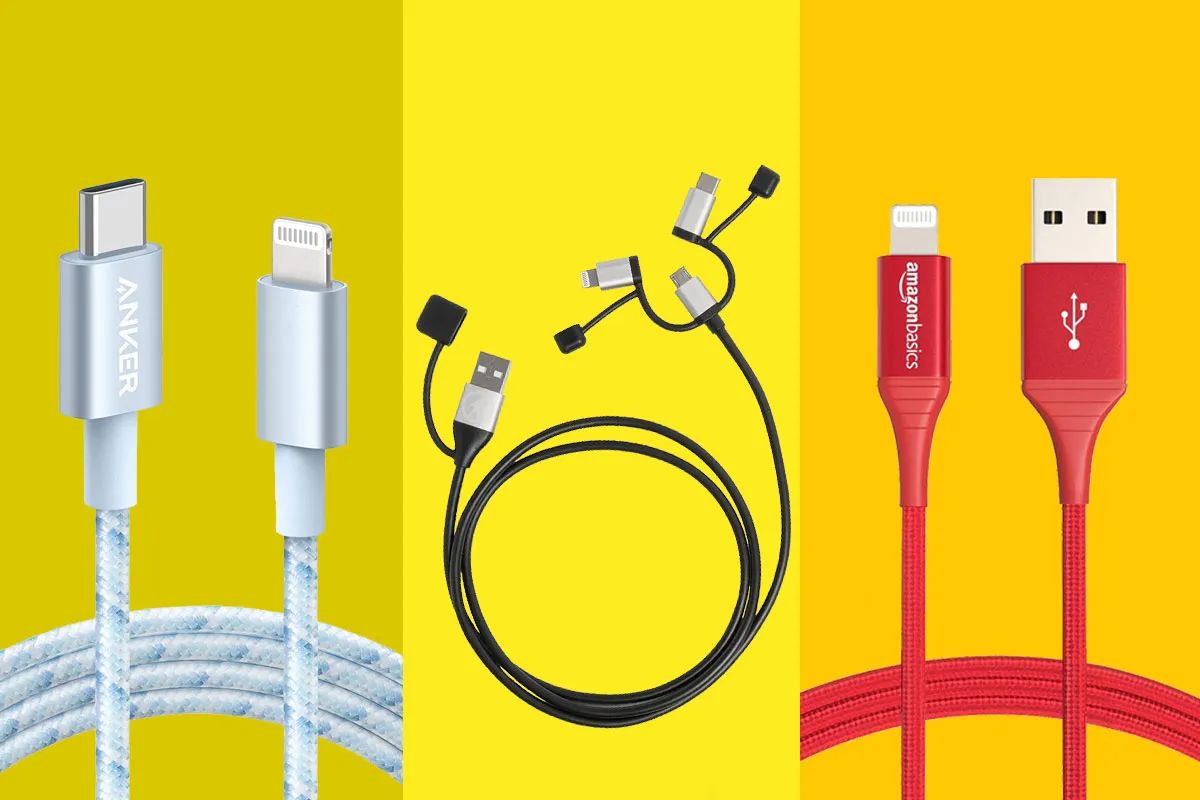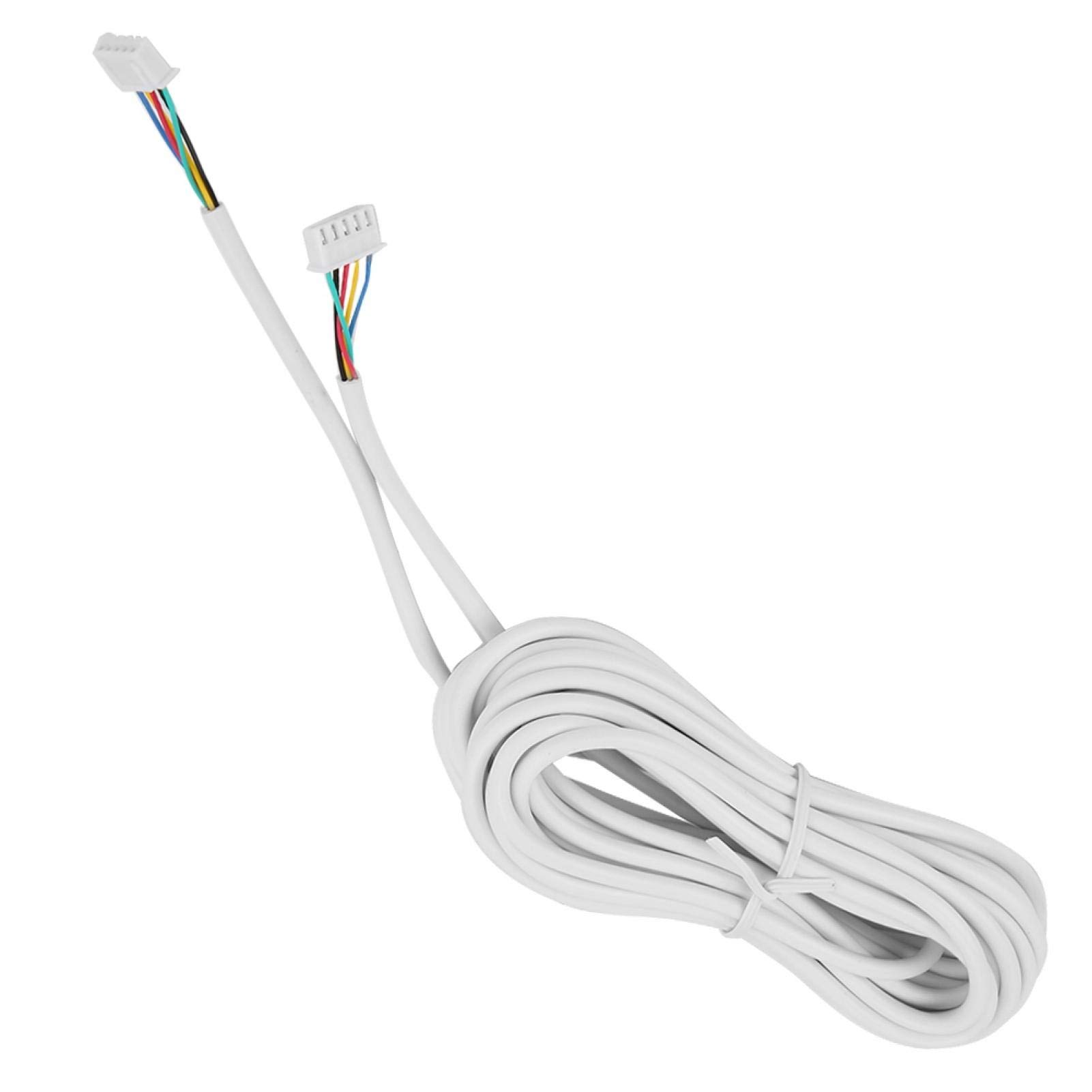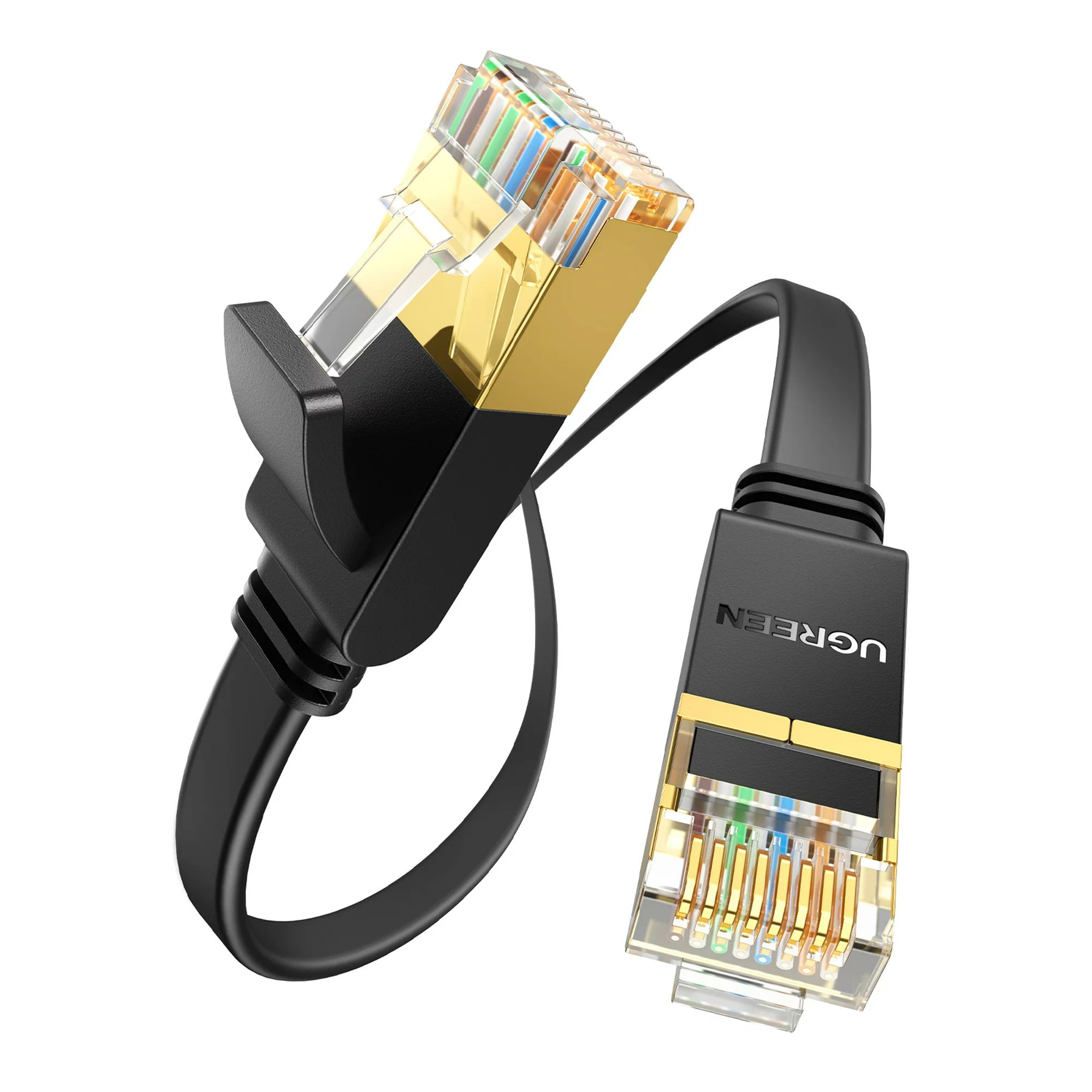Introduction
Ethernet wire serves as the backbone of modern networking technology, enabling us to seamlessly connect devices and access the vast realm of the internet. Whether you are setting up a home network or building a large-scale enterprise infrastructure, understanding the importance of choosing the right gauge for your Ethernet wire is crucial.
When it comes to Ethernet wire, the gauge refers to the thickness or diameter of the copper conductor inside the cable. Different gauges have varying characteristics, affecting data transmission speeds, distance limitations, and overall network performance.
In this article, we will delve deeper into the world of Ethernet wire gauges to help you make informed decisions when selecting the right cable for your networking needs. We will explore the significance of choosing the appropriate gauge, the different gauges available, and the key factors to consider when making your choice.
So, whether you are a tech enthusiast, a small business owner seeking to optimize your network, or just someone curious about the technicalities behind Ethernet wire, read on to discover why the gauge of your Ethernet wire matters.
What is Ethernet Wire?
Ethernet wire, sometimes referred to as Ethernet cable or network cable, is a type of cable specifically designed for data transmission in computer networks. It is the physical medium that allows devices to communicate with each other, share information, and access the internet.
At its core, Ethernet wire consists of twisted pairs of copper or fiber optic cables. These twisted pairs are enclosed within a protective jacket, providing insulation and shielding against interference. The cables are terminated with connectors at each end, allowing them to be easily plugged into devices such as computers, routers, switches, and other networking equipment.
Ethernet wire follows a set of standards defined by the Institute of Electrical and Electronics Engineers (IEEE), known as the Ethernet standard. The current Ethernet standard, known as IEEE 802.3, outlines the specifications for Ethernet wire and defines the rules for transmitting data over the network.
Over the years, Ethernet wire has evolved to support various speeds and technologies. The most common type of Ethernet wire used today is known as Category 5e (Cat5e) or Category 6 (Cat6) cable. These cables are capable of transmitting data at speeds up to 1 gigabit per second (Gbps) or even 10 gigabits per second (10 Gbps) in the case of Cat6a cables.
Ethernet wire is widely used in both residential and commercial settings. It is the primary means of connecting devices within local area networks (LANs), as well as extending networks over longer distances using switches, routers, and other networking devices.
Now that we have an understanding of what Ethernet wire is, let’s explore why choosing the right gauge is essential for optimal network performance.
Importance of Choosing the Right Gauge
Choosing the right gauge for your Ethernet wire is crucial for ensuring optimal network performance and reliability. The gauge of the wire directly impacts important factors such as data transmission speeds, distance limitations, and even power over Ethernet (PoE) capabilities.
One of the primary considerations when selecting the right gauge is the maximum data transmission speed. Thicker gauge cables, such as Cat6 or Cat6a, are capable of supporting higher data transfer rates compared to thinner cables like Cat5e. If you have a high-bandwidth network and need to transmit large amounts of data, using the appropriate gauge will prevent bottlenecks and ensure smooth data flow.
Distance limitations are also affected by the cable gauge. Thicker gauge cables have lower resistance, allowing data to travel over longer distances without suffering from signal degradation. This is particularly important in larger environments such as office buildings or data centers, where cables may need to span significant distances.
If you plan to utilize PoE features, where power is delivered through the Ethernet cable to power devices such as IP cameras or VoIP phones, choosing the right gauge is crucial. Thicker gauge cables can handle higher power loads more efficiently, preventing power loss and ensuring reliable power delivery to connected devices.
In addition to performance considerations, choosing the right gauge can also have cost implications. Thicker gauge cables typically cost more than thinner ones due to the higher quality materials used and the improved performance they offer. It’s important to strike a balance between your network requirements and budget when making a decision.
Overall, selecting the right gauge for your Ethernet wire is essential for achieving optimal network performance, transmission speeds, and distance coverage. It ensures that your network can handle the demands of modern applications and devices without compromising reliability or data integrity.
Now that we understand the importance of choosing the right gauge, let’s delve into the different Ethernet wire gauges available.
Understanding Ethernet Wire Gauge
Ethernet wire gauge refers to the thickness or diameter of the copper conductor inside the cable. It is typically measured in American Wire Gauge (AWG), where the higher the number, the thinner the gauge.
The gauge of an Ethernet wire directly affects its electrical properties, such as resistance and impedance. Thicker gauges have lower resistance and can carry more current, resulting in better signal transmission and reduced signal loss. Thinner gauges, on the other hand, have higher resistance and may introduce more signal degradation over longer distances.
The most common Ethernet wire gauges used today are Cat5e, Cat6, and Cat6a. Cat5e cables typically have 24 AWG conductors, making them suitable for most home and small office networks. Cat6 cables have thicker 23 AWG conductors and provide better performance for high-bandwidth applications and longer cable runs. Cat6a cables have even thicker 22 AWG conductors and are capable of supporting 10 Gbps speeds over longer distances.
It’s also worth noting that Ethernet wire gauge is not the only factor to consider. The overall construction quality of the cable, including the insulation, shielding, and connector quality, also play a role in determining the cable’s performance.
When choosing the right Ethernet wire gauge, it’s crucial to consider your specific network requirements and future-proofing needs. If you anticipate higher data transfer rates or longer cable runs, opting for a thicker gauge cable like Cat6 or Cat6a may be a wise choice. However, for basic home or small office networks, Cat5e cables with 24 AWG conductors may suffice.
Additionally, it’s essential to ensure that the Ethernet wire gauge you choose aligns with the capabilities of your networking equipment. For example, if you invest in high-performance routers or switches capable of handling higher data speeds, using a thinner gauge cable may limit the overall network performance.
By understanding the implications of Ethernet wire gauge and considering your specific network requirements, you can make an informed decision that ensures optimal network performance and future scalability.
In the next section, we will explore the common Ethernet wire gauges available and their respective applications in networking scenarios.
Common Ethernet Wire Gauges
When it comes to Ethernet wire, there are several common gauges used in networking scenarios. Each gauge has its own strengths and is suitable for different applications based on speed requirements, distance coverage, and budget considerations.
1. Cat5e: This is one of the most widely used Ethernet wire gauges. Cat5e cables typically have 24 AWG conductors and are capable of supporting data speeds up to 1 Gbps. They are suitable for most residential and small office networks where high-speed data transmission is not the primary concern.
2. Cat6: Cat6 cables feature thicker 23 AWG conductors and offer improved performance compared to Cat5e. They are designed to support higher bandwidths and are capable of transmitting data at speeds up to 10 Gbps over shorter distances. Cat6 cables are ideal for environments that require faster data speeds and have moderate cable lengths.
3. Cat6a: Cat6a cables take network performance to another level. With 22 AWG conductors, they can support 10 Gbps speeds over longer distances compared to Cat6 cables. Cat6a cables also provide better resistance to crosstalk and interference, making them suitable for high-performance applications such as data centers, enterprise networks, and professional installations.
4. Cat7: Cat7 cables are designed to meet the demands of even higher network speeds and enhanced shielding against interference. They feature thicker conductors and offer better overall performance compared to previous generations. However, it’s worth noting that Cat7 is less common and may be more costly compared to the aforementioned gauges.
It’s important to note that the aforementioned gauges are just some of the common options available. There are other specialized Ethernet wire gauges, such as Cat7a and Cat8, that are designed for specific professional applications requiring even higher speeds and improved performance. These gauges are typically used in advanced networking setups and require specialized equipment to fully utilize their capabilities.
When selecting the right Ethernet wire gauge, consider the specific requirements of your network, the speed and distance limitations you need to support, and your budget constraints. Consulting with an experienced network professional can also provide valuable insights and ensure you make the best choice for your networking needs.
Now that we have explored the common Ethernet wire gauges available, let’s delve into the factors you should consider when selecting the right gauge for your network.
Factors to Consider When Choosing the Right Gauge
When selecting the right Ethernet wire gauge for your network, it’s important to consider several factors to ensure optimal performance and compatibility. Here are key factors to keep in mind:
1. Speed Requirements: Assess the data speeds your network needs to support now and in the future. If you require high-speed data transmission, such as for multimedia streaming or large file transfers, choosing a thicker gauge cable like Cat6 or Cat6a is recommended.
2. Distance Coverage: Consider the distance that the Ethernet wire needs to span within your network. Thicker gauge cables have lower resistance, allowing for longer cable runs without signal degradation. If you have a larger environment or need to connect devices over significant distances, opt for cables with thicker gauges.
3. Power over Ethernet (PoE) Capability: Determine if you plan to utilize PoE features to power devices through the Ethernet cable. Thicker gauge cables can handle higher power loads more efficiently and prevent power loss over longer distances. If you require PoE capabilities, consider choosing a thicker gauge cable for optimal power delivery.
4. Network Environment: Evaluate the specific environment in which the Ethernet wire will be installed. Consider factors such as interference, crosstalk, and electromagnetic radiation. Thicker gauge cables offer better resistance to external interference, making them suitable for environments with higher levels of electrical noise.
5. Budget Considerations: Determine your budget and balance it with your network requirements. Thicker gauge cables generally cost more due to their improved performance. If your network demands high-speed data transmission or longer distance coverage, investing in a thicker gauge cable may be necessary.
6. Networking Equipment Compatibility: Ensure that the Ethernet wire gauge you choose aligns with the capabilities of your networking equipment. High-performance routers, switches, and network adapters may require thicker gauge cables to maximize network performance.
By considering these factors, you can make an informed decision when choosing the right Ethernet wire gauge for your network. It’s essential to strike a balance between your network requirements, future scalability, budget limitations, and the compatibility of your networking equipment.
Now that we have explored the factors to consider, let’s summarize the key points discussed in this article.
Conclusion
Choosing the right gauge for your Ethernet wire is essential for ensuring optimal network performance, data transmission speeds, and distance coverage. Ethernet wire serves as the foundation of modern networking technology, allowing devices to connect and communicate seamlessly.
Throughout this article, we have explored the importance of choosing the appropriate Ethernet wire gauge and the factors to consider when making your selection. We’ve learned that the gauge of the wire directly affects data transmission speeds, distance limitations, and power over Ethernet capabilities.
Understanding the different Ethernet wire gauges, such as Cat5e, Cat6, and Cat6a, is crucial for selecting the right cable for your specific networking needs. Each gauge offers varying performance levels and is designed for different applications based on speed requirements, distance coverage, and budget constraints.
Moreover, factors such as speed requirements, distance coverage, power over Ethernet capability, network environment, budget considerations, and networking equipment compatibility should be taken into account when choosing the right gauge.
By considering these factors and making an informed decision, you can ensure that your network operates smoothly, supporting high-speed data transfer, maintaining signal integrity, and providing reliable connectivity.
Whether you are setting up a home network, a small office network, or a large-scale enterprise infrastructure, understanding the importance of Ethernet wire gauge is essential. It allows you to optimize your network’s performance, accommodate future network demands, and make the most out of your networking investment.
Keep in mind that selecting the right Ethernet wire gauge is just one aspect of building a reliable network. Paying attention to other factors such as cable quality, proper installation, and regular maintenance can further enhance your network’s performance and longevity.
So, next time you’re setting up or upgrading your network, remember the significance of choosing the right gauge for your Ethernet wire – it can make all the difference.







